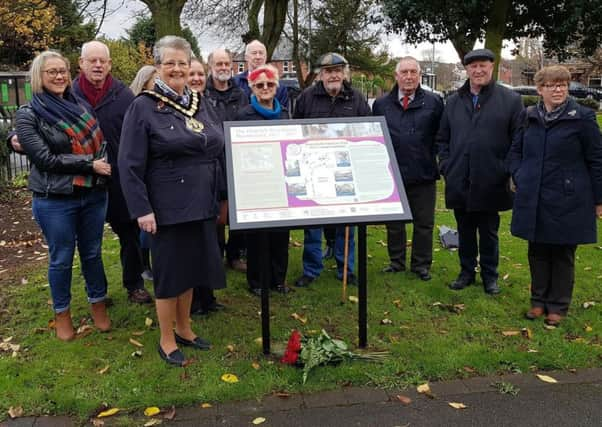How Sutton was at heart of England's last armed uprising


The Pentrich Revolution of 1817 began in the Derbyshire village of that name, but there are numerous links to Sutton, most notably that it was the home of the uprising’s leader, Jeremiah Brandreth.
Now, an information panel and self-guided tour, telling the whole story and pinpointing local landmarks, has been funded by Nottinghamshire County Council.
Advertisement
Hide AdAdvertisement
Hide AdThe panel, which is located inside the entrance to St Mary’s Garden on Lammas Road, was unveiled by the chairman of the council, Coun Sue Saddington, and members of the Pentrich and South Wingfield Revolution Group.
Laura Simpson, heritage tourism officer at the council, said: “The role Sutton played deserves to be remembered as a piece of local history that has national significance.
“The people involved, such as Jeremiah Brandreth and his wife Ann, were fascinating characters who believed in their cause for a fairer society.
“The recognition we are now giving them is long overdue and cements Ashfield’s role in history as a place of rebellion and free thinking.”
Advertisement
Hide AdAdvertisement
Hide AdBrandreth, known as the ‘Nottingham Captain’, led about 250 stockingers, quarrymen and iron workers on the uprising, which was fuelled by poor wages, a depression in trade and a demand for reform in the long struggle for democracy.
They were armed with pikes, scythes and a few guns. But among them was a government spy and the revolution was soon quashed, with Brandreth among three men hanged and beheaded with an axe for treason.
Visitors to Sutton will now be able to learn more about Brandreth and how his wife walked 40 miles to Derby prison to see him before his death, even though she was heavily pregnant.
Coun John Cottee, of the county council, said: “We are delighted with this project. The county’s heritage and its sense of place are so important to us.”
Advertisement
Hide AdAdvertisement
Hide AdSUTTON played such an important part in the Pentrich Revolution because, in the early 19th century, the town was a centre of the framework knitting trade, with many stockingers’ houses located where the Staff Of Life pub is today.
Bosses were accused of paying wages below the established rates, and in the famous Luddite Attacks, 37 frames were destroyed at a warehouse in Sutton Woodhouse, for which six Sutton men were transported as convicts for life.
Jeremiah Brandreth, a stockinger who lived at Bedlam Court, where Sutton Community Academy is today, supported the Luddite Movement and, as a former soldier, he led the Pentrich Revolution.
When it collapsed, he tried to escape on a ship to America, but was soon arrested. At his trial, he was defended by lawyer Thomas Denman, after whom the old Denman’s Head pub (now a Costa Coffee shop) on Market Place in Sutton was named.